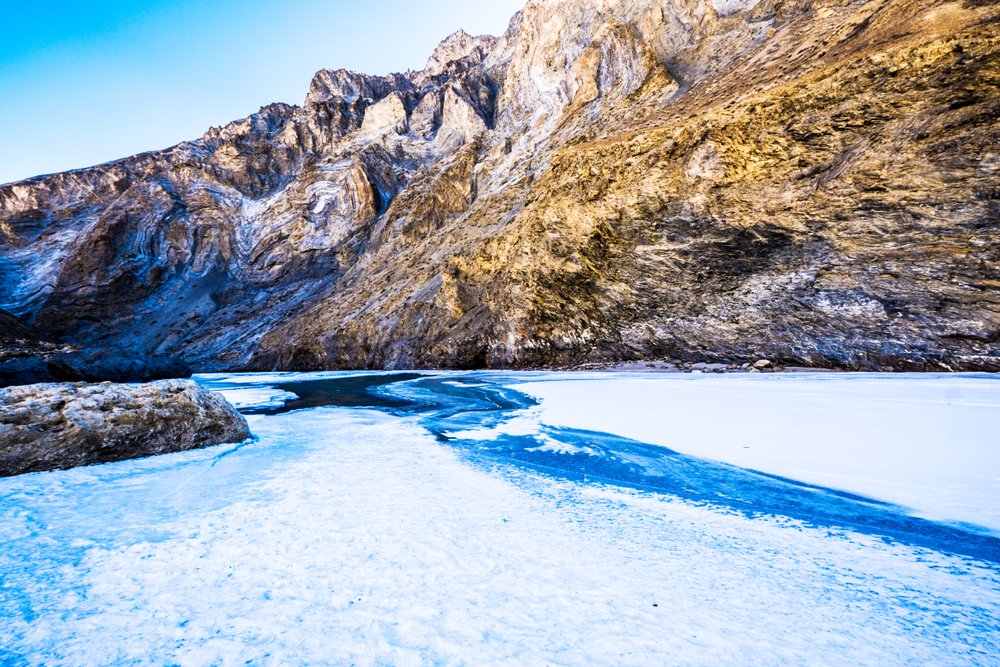Study: Himalayan glaciers are melting at an 'unusual' rate
Himalayan glaciers are melting at an alarming rate. A new study has shown that in the past 40 years, the giant ice sheet in this place has shrunk 10 times faster than it did 7 centuries ago and threatens to endanger a large number of people in Asia. .

Specifically, researchers at the University of Leeds, UK have found that glaciers in the Himalayas are shrinking much faster than glaciers in other parts of the world.
According to a statement from the university, the researchers also found that compared with the average amount of ice loss since the Little Ice Age about 400 to 700 years ago, the melting rates of the Himalayan glaciers have increased tenfold in recent decades.
The Himalayas have the 3rd largest glacier in the world, after Antarctica and the North Pole. It is sometimes referred to as the '3rd pole' glacier.
The University of Leeds announced that the study was published in the journal Scientific Reports on December 20. The study used satellite imagery and digital elevation models to reconstruct 14,798 Himalayan glaciers that existed during the mini-glacial period.
The researchers then compared the reconstructed glacier to its current state, to determine the volume and mass of the glacier that had been lost over time.
The team found that the glacier's area has decreased from 28,000 km² to about 19,600 km² today, which is about 40% reduction.
The researchers also observed a decrease in ice volume from 390 km3 to 586 km3, which is equivalent to the total amount of Scandinavian Peninsula ice over the Alps of Central Europe, the Caucasus and Scandinavia.
According to a statement from the University of Leeds, the researchers predict that the water released by melting will raise global sea levels by between 0.92 mm and 1.38 mm.
Dr Jonathan Carrivick, a glaciologist at the University of Leeds and co-author of the research paper, said: 'This part of the world may be changing faster than anyone realizes. The glaciers in the Himalayas are not only changing very quickly, they are also changing rapidly."
Scientists have long observed ice loss from major glaciers in New Zealand, Greenland, Patagonia (the geographical area that includes the southernmost part of South America) and other parts of the world.
But new research has found that Himalayan ice loss is very rapid. The researchers did not specify a cause, but said that regional climatic factors such as changes in the South Asian monsoon may play some role.
The massive melting of Himalayan glaciers has had dire consequences for hundreds of millions of people who depend on Asian river systems for food and energy, including the surrounding rivers. around the basins of the Brahmaputra, Ganges and Indus rivers.
Other effects of avalanches, floods and rapid ice loss are endangering residents in India, Nepal and Bhutan, according to the researchers. At the same time, they can destroy the agricultural production of hundreds of millions of people in South Asia.
As water from melting glaciers causes sea levels to rise, the loss of Himalayan ice also exacerbates the threat of flooding and related problems facing coastal communities around the world today. must face to face.
- Himalayan glaciers threaten millions of people
- Glaciers in Asia are unusually bloated
- Himalayan glaciers can disappear!
- Antarctic glaciers are melting at a rapid rate
- Antarctic glaciers are melting faster
- Find the main culprit causing the glaciers to melt
- Climate change may cause the disappearance of 5,500 Everest glaciers
- What happens when ice in the West Antarctica melts?
- The world's fastest melting glaciers through satellite images 30 years apart
- The Andes glaciers narrowed the record
- When the glaciers in Iceland melt into small streams
- The discovery of glaciers is melting under the layer of dust on the surface of Mars
 Is the magnetic North Pole shift dangerous to humanity?
Is the magnetic North Pole shift dangerous to humanity? Washington legalizes the recycling of human bodies into fertilizer
Washington legalizes the recycling of human bodies into fertilizer Lightning stone - the mysterious guest
Lightning stone - the mysterious guest Stunned by the mysterious sunset, strange appearance
Stunned by the mysterious sunset, strange appearance The phenomenon of 'moving borders' changes the shape of countries
The phenomenon of 'moving borders' changes the shape of countries  Why do Italy and Switzerland have to redraw the border?
Why do Italy and Switzerland have to redraw the border?  The world's fastest melting glaciers through satellite images 30 years apart
The world's fastest melting glaciers through satellite images 30 years apart  Glaciers on Mount Mont Blanc are at risk of collapse
Glaciers on Mount Mont Blanc are at risk of collapse  10 places you should go before it disappears
10 places you should go before it disappears  The existence of glaciers in the Himalayas
The existence of glaciers in the Himalayas 